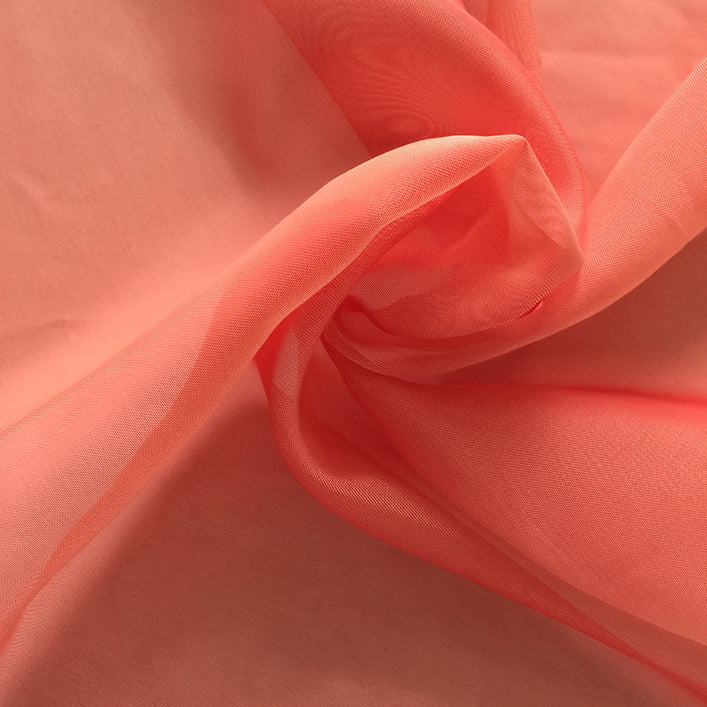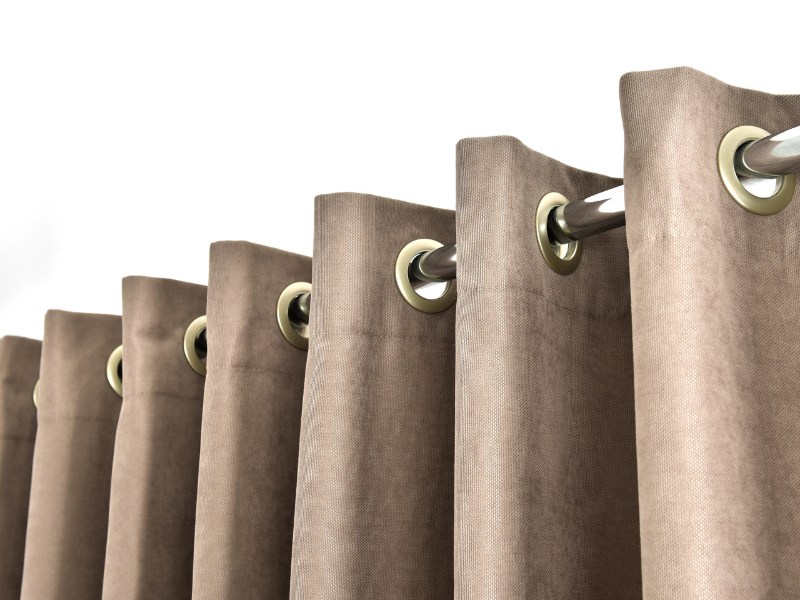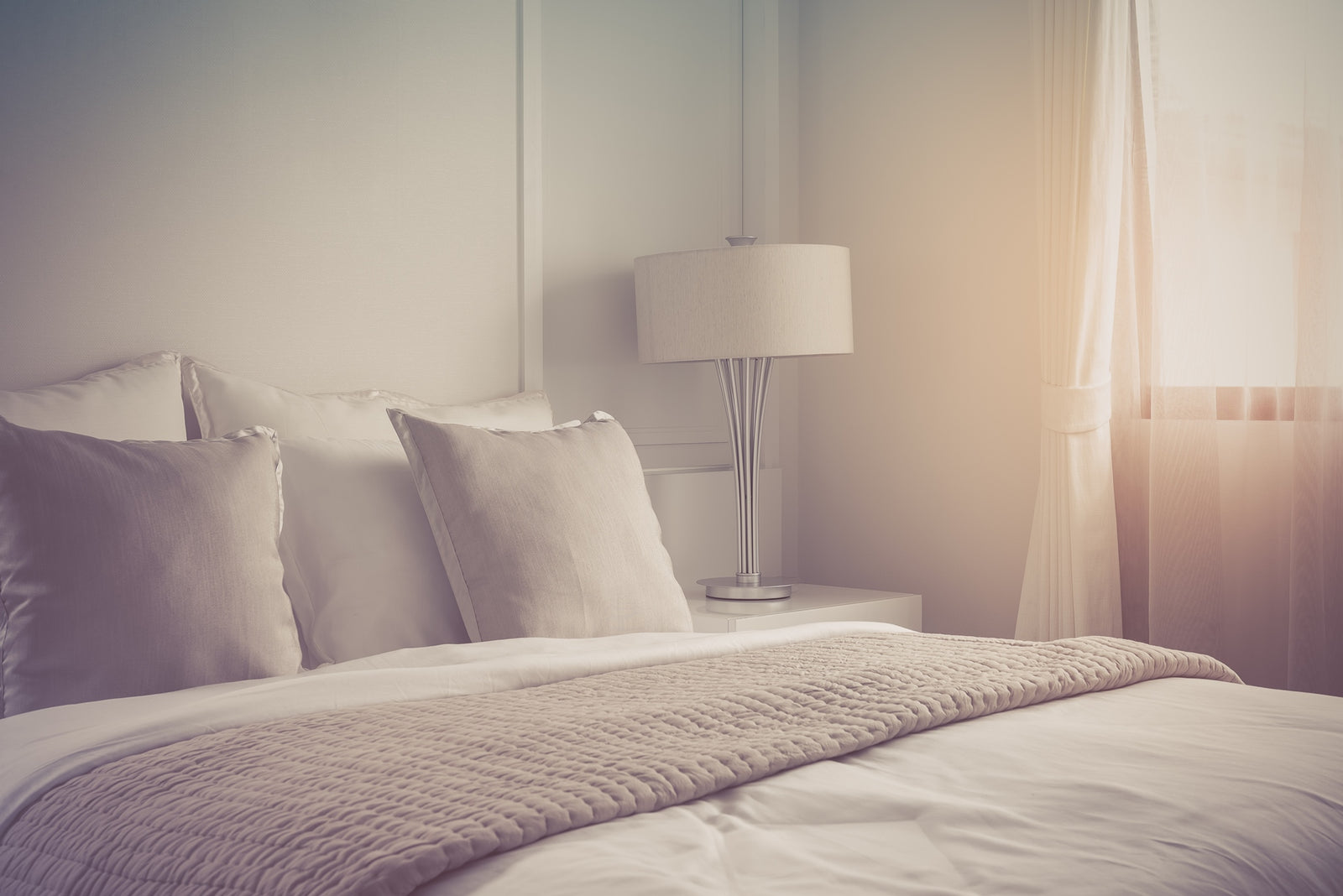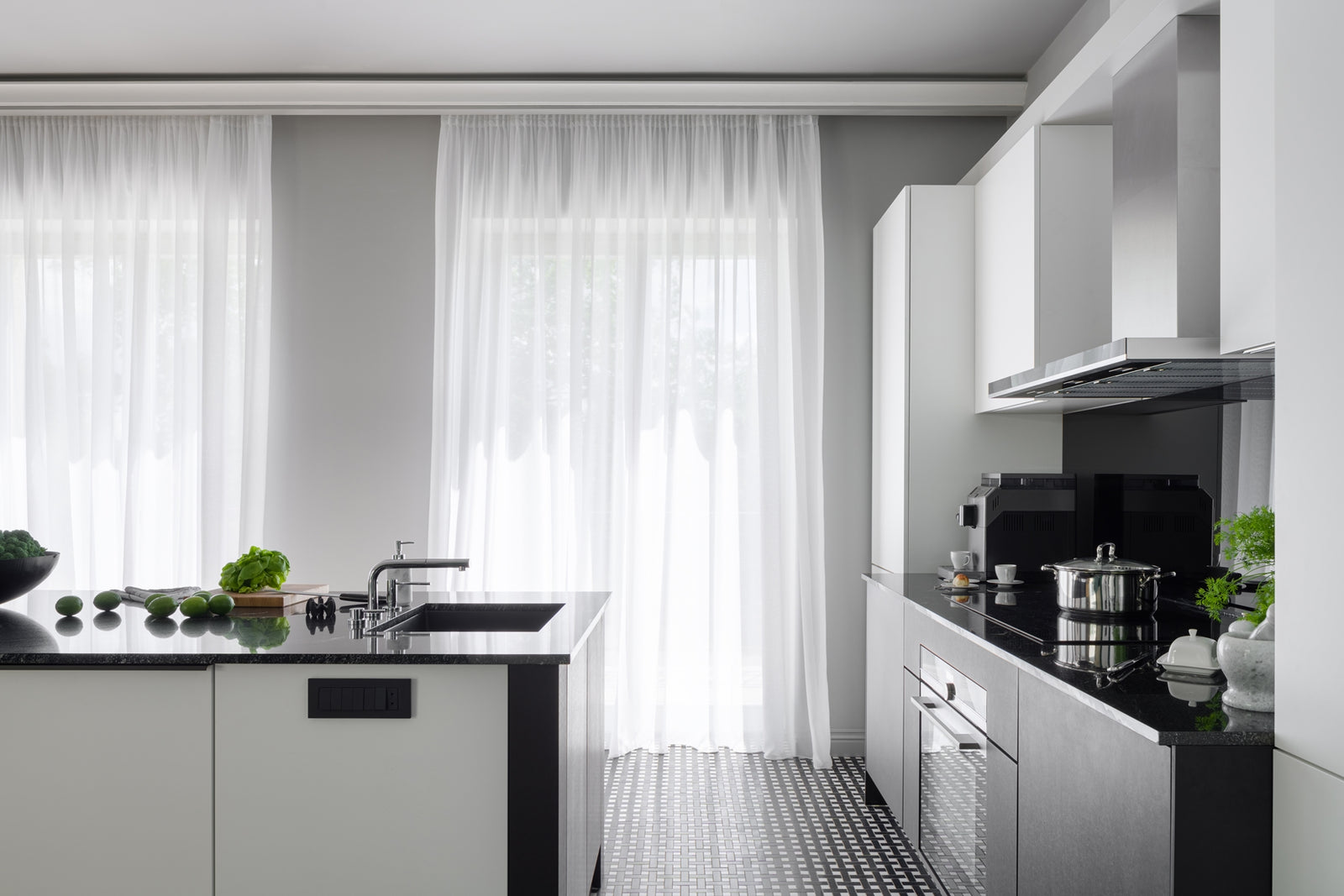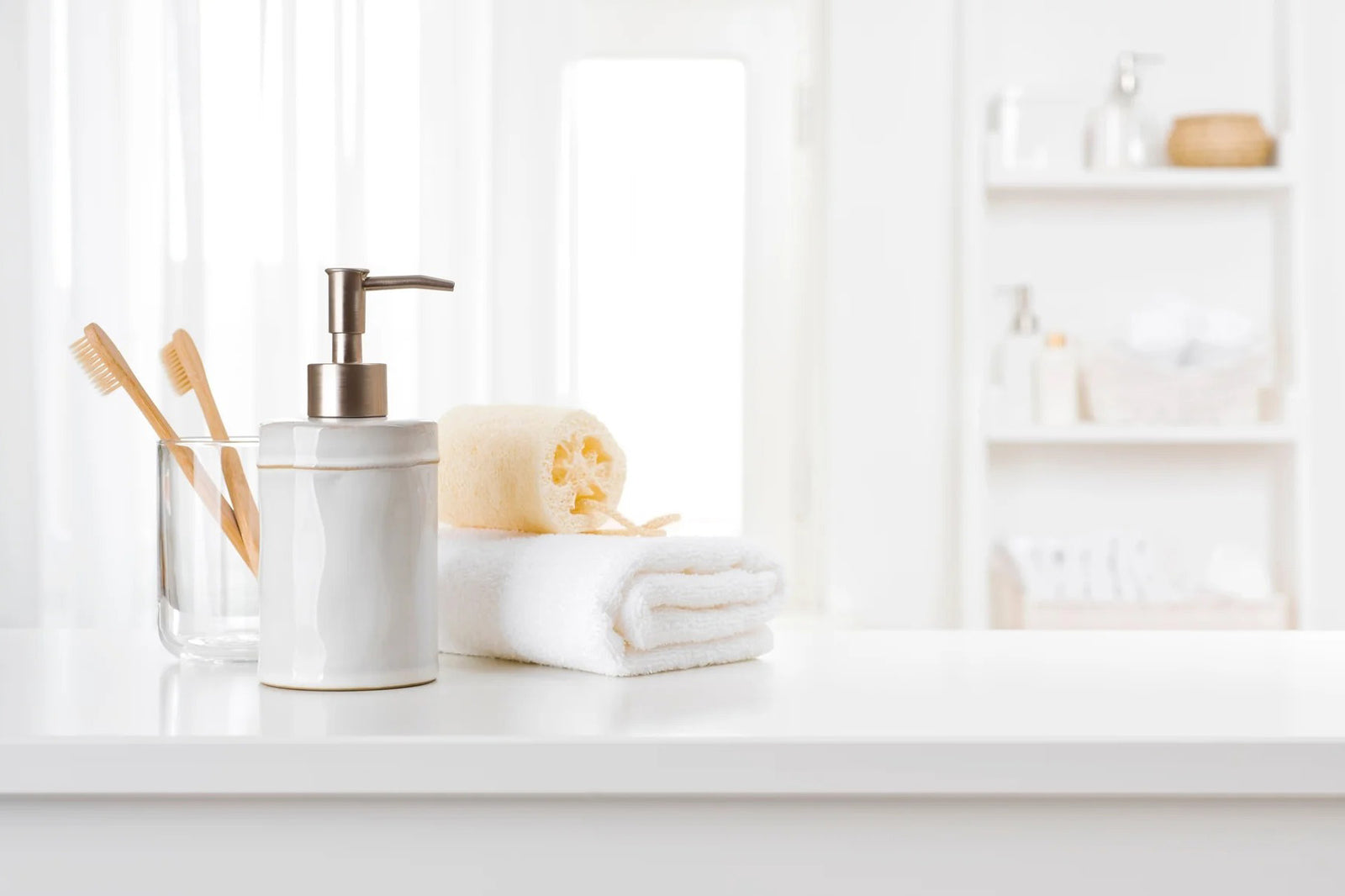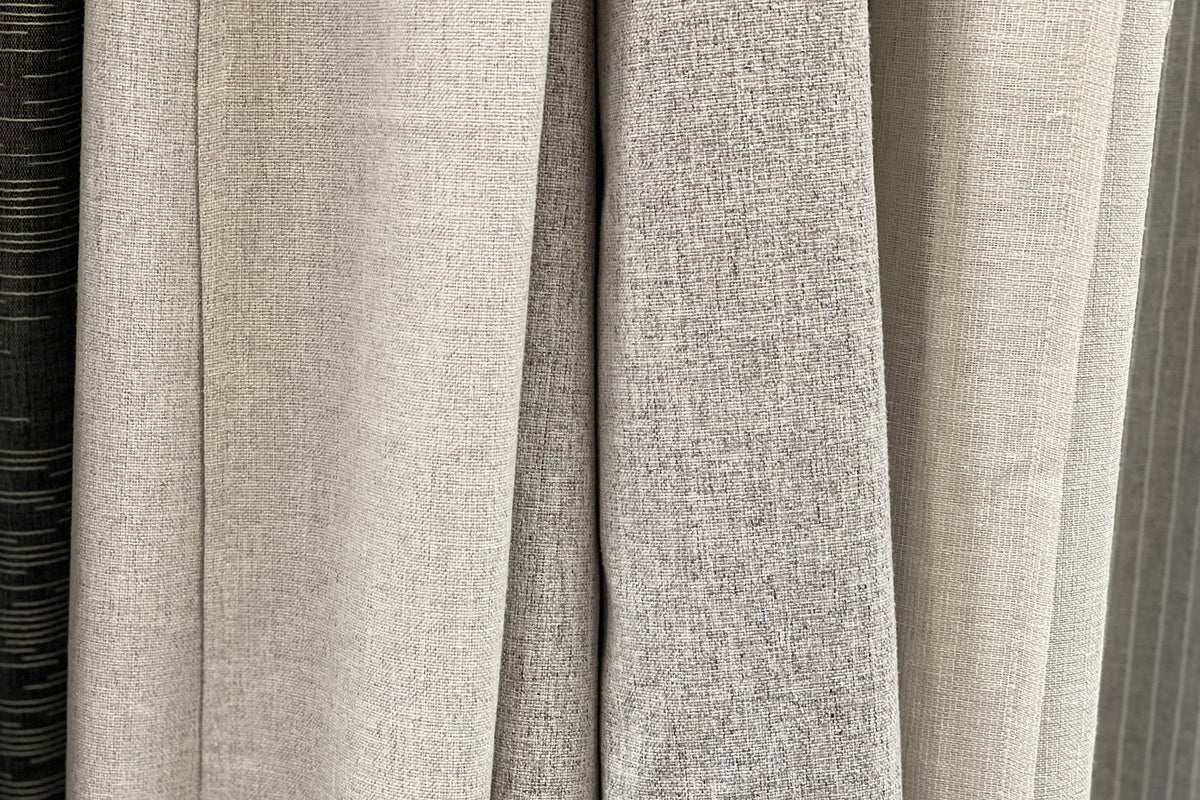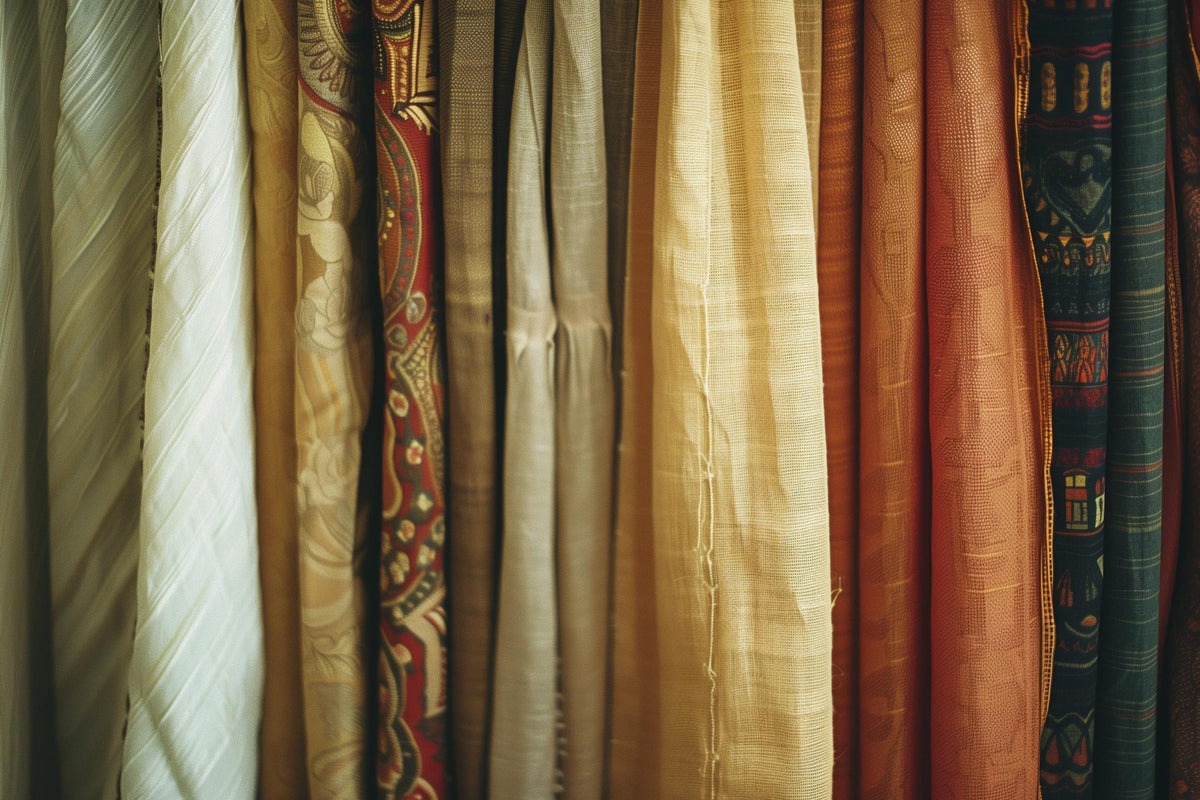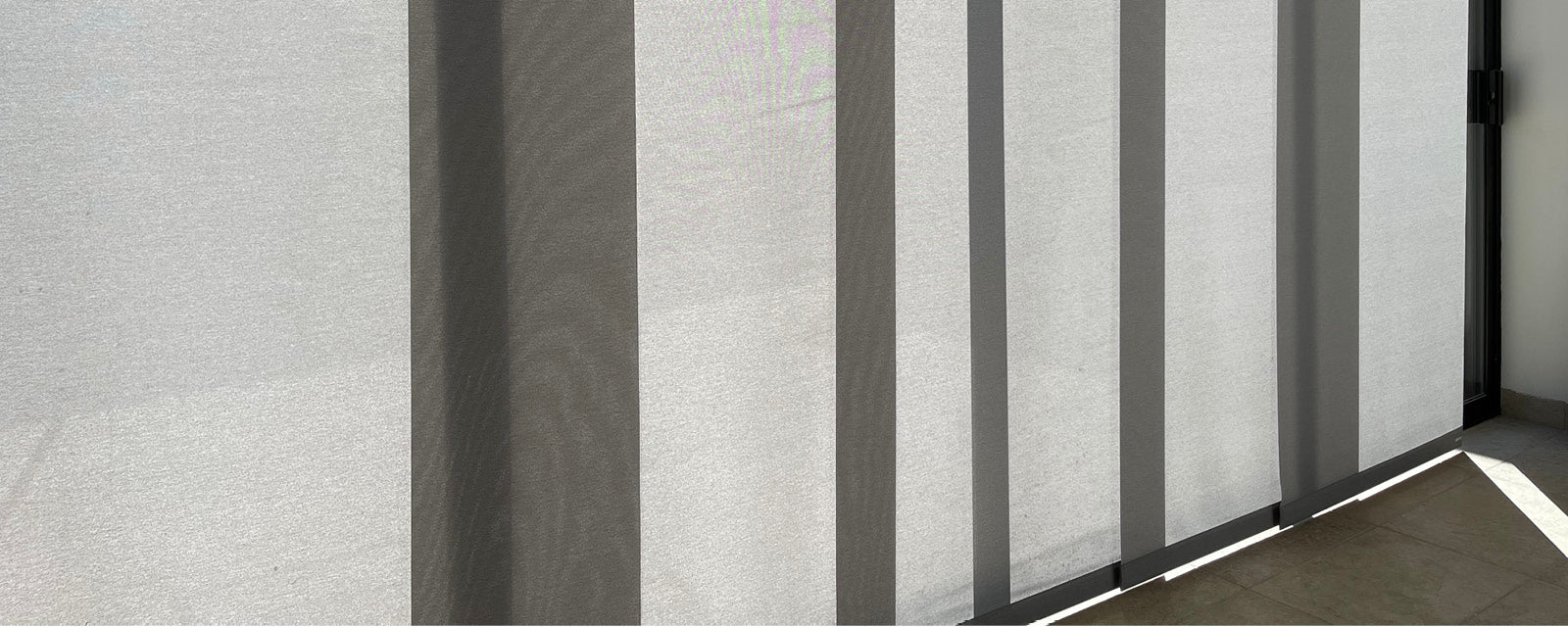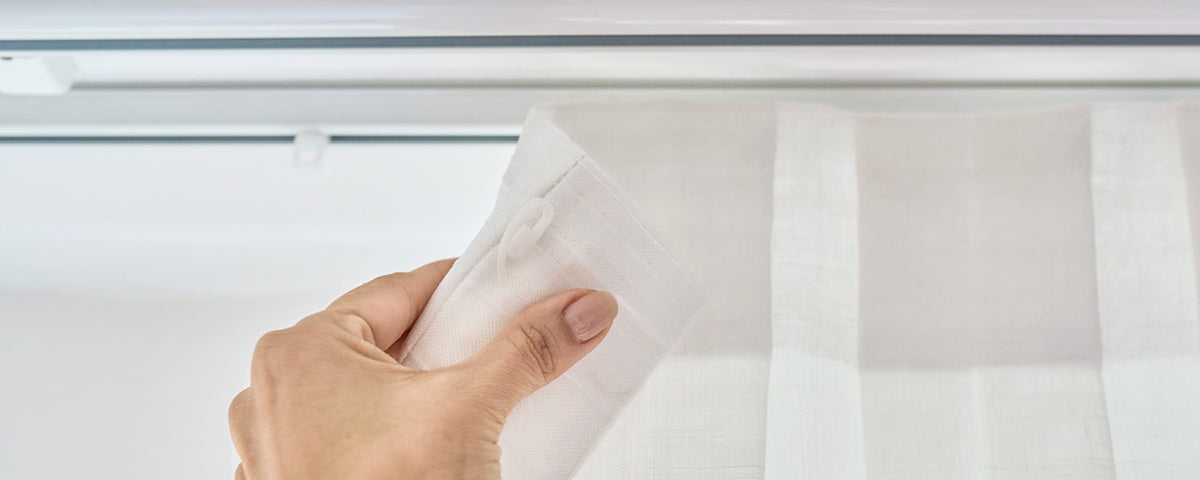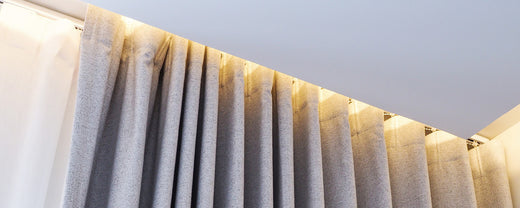
Whether it's a cozy living room or an elegant dining room - the choice of curtains makes all the difference! But have you ever thought about the folds? Because the folds not only affect the look and effect of the curtains, but also how much light falls into the room.
In this blog article, we'll tell you what types of curtain folds there are and how you can best showcase your curtains. You'll also learn everything you need to know to calculate the right amount of fabric.
Different types of wrinkles and why they are so popular
The style of pleats on a curtain defines how the fabric is gathered or sewn at the top of the curtain. Their purpose is purely aesthetic; they create the illusion of fullness. The aim of both interior design and fashion has always been to create an opulent and luxurious look. In many cultures, pleats were traditionally reserved for nobility or ceremonial occasions. However, pleats have been popular since ancient times, hence the large number of variations. The versatility of these designs allows curtains to adapt individually to different interior design styles and personal preferences. Depending on the style, folds can look elegant, modern, simple or opulent - and that is exactly what makes them so versatile.
The 7 most popular curtain pleat types at a glance
The type of fold is an important factor that has a significant impact on the overall effect of the room. Whether you prefer a cozy living feeling or modern clarity - we will show you the seven most popular types of curtain folds below and explain how you can use them to their full advantage in your home.
Gathered tape folds:

- This type of curtain pleat is probably the most flexible and most commonly used variant. The fabric is evenly gathered using a gathering tape. This technique is particularly suitable if you are looking for a simple yet elegant solution. Gathering tape pleats suit almost any interior design style and are easy to use. Another advantage: they can be easily attached to both curtain rods and rails.
Classic pencil pleats:

- Pencil pleats, often referred to as the "classic pleat style," consist of closely spaced, regular folds that give the curtain a traditional and timeless look. These curtain pleat styles are ideal for living rooms and other formal rooms. They are particularly beneficial if you want balanced light distribution and a harmonious look at the same time.
Light wave folds:

- Wave folds, also known as ripple folds, create gentle, flowing waves that work particularly well in modern and minimalist interiors. This type of fold is ideal if you want a curtain that looks good even when open. However, they require special track systems to maintain their shape.
Modern eyelet pleats:

- With eyelet pleats, the curtain fabric is threaded through metal eyelets that are attached to the top edge of the curtain. This creates deep, even folds and a modern, tidy look. This type of curtain pleat is particularly suitable for heavy fabrics such as velvet or linen and goes well with contemporary home styles.
More formal box pleats (reverse pleats):

- Box pleats, also known as "reverse pleats," are deep folds that fall backwards, giving the curtain a very structured and formal look. This type of pleat is perfect for rooms where you want to achieve a clean and elegant look.
Elegant French pleats (pinch pleat):

- The French pleat, also known as a pinch pleat, exudes elegance and opulence. This type of pleat is often used on heavy fabrics such as velvet or silk and creates a luxurious look that is ideal for formal spaces such as the living room or dining room.
Swiss round folds:

- And last but not least: the traditional Swiss round pleat - the Swiss classic, which is characterized by hand-formed, round pleats that give the curtain a particularly elegant and robust structure. This type of curtain pleat is particularly popular with made-to-measure curtains Find out everything about our wide range of made-to-measure curtains here and is therefore suitable for almost all types of curtains.
Curtain pleats: folds perfectly into shape in just 5 steps
The art of creating flawless, beautiful curtain folds begins with careful preparation. Depending on the variant, this may seem a bit tricky at first, but with a few simple steps, you too can create the perfect folds in no time.

Here is our little how-to on how to fold curtains:
Step 1: Calculate fabric requirement, pleat factor & curtain width:
Before you can even start folding, it is important to calculate the width of the fabric you need. The right amount of fabric and answering the question "My curtain: how wide should it actually be?" are essential to ensure that your curtains actually fit perfectly in the end. However, the amount of fabric you need varies considerably depending on the type of curtain fold you choose. An important factor and aid in determining the right amount of fabric precisely is the so-called "fold factor". It indicates how much more fabric you need in comparison to the width of the window.
Therefore, here is a small overview to make the calculation easier for you:
- Pencil pleats = between 2.5 and 3 times the window width.
- Gathering tape folds = about 2.5 times the window width.
- Eyelet folds = usually 1.5 to 2 times the window width.
- Loops = about 1.5 times the window width.
- Box folds = between 2 and 2.5 times the window width.
- Wave folds = often also 1.5 to 2 times the window width necessary
EXAMPLE 1:
If your window is 2 metres wide and you want to make pencil pleat curtains, you should multiply your window width by a pleat factor of 2.5 to 3. This means you will need between 5 and 6 metres of fabric to ensure the curtains have the desired drape and look perfect.
Step 1 – Special case: Wrinkle factor for patterned & thick fabrics:
But it is not just the type of fold that influences the amount of fabric needed - the pattern and quality of the fabric also play a decisive role. Patterned fabrics often require a larger amount of fabric so that the motifs lie evenly and clearly visible in the folds.
- For patterned fabrics, you should therefore expect a fold factor of about 2.5.
- In addition, thicker fabrics create wider folds, which is why you should plan for a higher fold factor of 2.5 to 3 for such materials.
EXAMPLE 2:
If you choose a patterned, thick fabric for curtains with wave folds and your window is 2 meters wide, a fold factor of 2 is recommended. This means that you need 4 meters of fabric so that the pattern appears even and the waves fall softly and harmoniously.
Once you have determined the pleat factor, you can calculate the actual amount of fabric and curtain width needed. Use the following formula:
Pleat factor × (window width + fabric allowance) = curtain width
Step 2: Distribute the folds harmoniously using gathering tape, pleat hooks, etc.
After you have calculated the amount of fabric and selected the right fabric, it is time to distribute the folds evenly. With curtain pleat types such as pencil pleats or ruffle tape pleats, it is important to distribute the folds evenly to create a harmonious overall picture.
-
Variant 1 - Gathering ribbon:
For many, the gather tape is the heart of harmonious pleats. Attach it to the top edge of the curtain and then pull on the drawstrings until the ideal pleat depth is achieved and distribute the pleats across the entire width of the curtain. -
Variant 2 - Fold hook:
Use pleat hooks that hook into the curtain's pre-made pockets. These hooks ensure uniform pleats, especially for curtains with deep box or pencil pleats. -
Variant 3 - pleated rolls:
Insert pleat rollers into the curtain loops to distribute the pleats symmetrically on a rail. This method is particularly suitable for wave pleats as they create a very flowing image.
Step 3: Fix wrinkles
To ensure that the folds stay in their shape, you should fix them. With eyelet folds, the eyelets do this job, but with gather tape folds, you can fix the folds with curtain rings.
- Pull the folds apart evenly and fasten them carefully so that they fall symmetrically and there are no gaps.
Step 4: Small final inspection
Before you finally hang up your freshly folded curtains, it would be advisable to check the folds again.
- Correct any irregularities and make sure that all folds fall evenly.
Step 5: Hang curtains
Depending on the selected Accessories for Curtains & Drapes, such as curtain rods or rails, the effect of the folds can change again. In our blog article » types of curtain hanging By the way, we will introduce you to the different types of suspension in detail.
- Now hang the curtain carefully and, just to be on the safe side, check again that the folds are perfect and that your curtain really looks its best.
CONCLUSION: How to find the perfect pleat type for your curtains
By choosing the ideal type of pleat, you can create the perfect look for your curtains. Whether modern, classic or opulent - the variety and flexibility of curtain pleat types allows you to design each room individually.
And if you are unsure about taking measurements and would prefer professional support, we offer our completely free home consultation throughout Switzerland. Our experienced home consultants will advise you directly on site and help you design your curtains to measure and in style.
HERE YOU CAN FIND INFORMATION ABOUT OUR SWITZERLAND-WIDE HOME CONSULTATION


